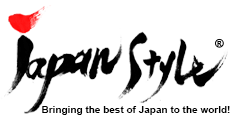97.5% of all water on Earth is saltwater that is not suitable for drinking, and the fresh water is only 2.5%, but most of it is glacier and perpetual snow; therefore, drinkable water is less than 0.01%. Furthermore, it is said that about 70% of the water consumption are used to produce food. Accordingly, it is necessary to desalinate or purify used water effectively, to solve world shortage of water.
There are mainly two types of desalination methods, “Flash Distillation” and “Reverse Osmosis Membrane.” The former is the process that flashes a portion of the water into steam, and then let the steam cool down back into liquid water. Because it needs a great scale of energy, the diffusion rate is low. The latter literally uses Reverse Osmosis (RO) membrane. The device is compact and consumes less energy; therefore, it has been the mainstream in desalination plants.
Japanese businesses have 60% share of water treatment membrane in the world, and lead the world in RO membrane having 70 % share of it. In addition, Japanese businesses are highly competitive on “Microfiltration Membrane,” which is used to purify industrial effluents and sewage.
In 2007, the water market in the world was US$ 350 billions. It is expected to be double, US$ 700 billions in 2025 (Ministry of Economy, Trade and Industry).
[Source: White Paper on International Trade Japan 2009 by Ministry of Economy, Trade and Industry]
In the Middle East and Asia, the projects employ Japanese water treatment membranes are increasing, and at the same time, Japanese companies joined in overseas water business.
In the future, Japan is expected to meet the world demand and that the Japanese manufacturers and companies get united and step up the solution business including designing, construction, and administration service.
It is not just about seizing the big business opportunity, but most importantly, the technology can save the billion people who don’t have access to clean, safe drinking water.
Source: YOMIURI ONLINE (Sept/15/2010)





![[Photoblog] Omiwa Shrine in Spring](http://www.japanstyle.info/wp-content/uploads/2012/05/20120513_photoblog_omiwa-shrine-in-spring-65x65.jpg)

![[Photoblog] Seeing Off Visitors of Himuro Shrine](http://www.japanstyle.info/wp-content/uploads/2013/04/20130401_photblog_himuro-shrine-in-early-spring-65x65.jpg)
![[Photoblog] Nanaotome Lady](http://www.japanstyle.info/wp-content/uploads/2012/06/photoblog_nanaotome-65x65.jpg)
![[Photoblog] Statue in Kikouji Temple](http://www.japanstyle.info/wp-content/uploads/2012/08/20120831_photoblog_statue-in-kikouji-temple-65x65.jpg)

Recent Comments